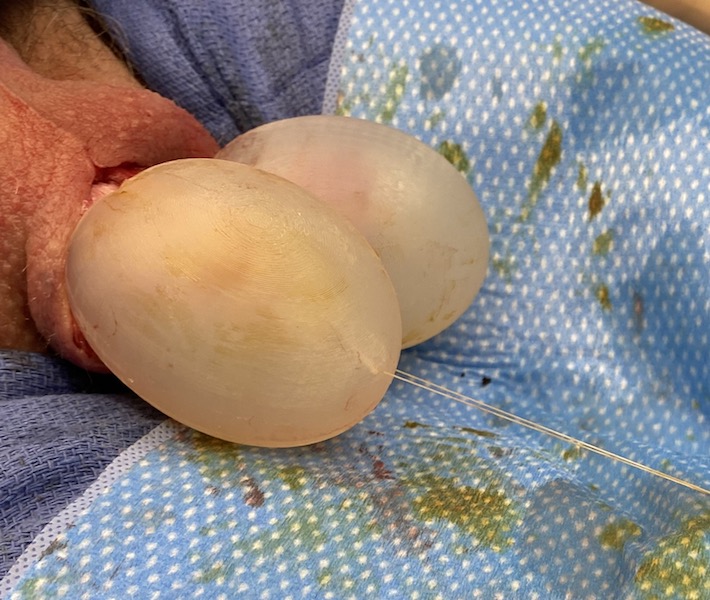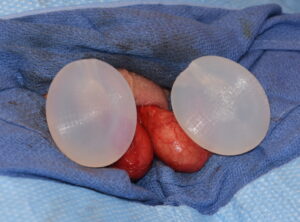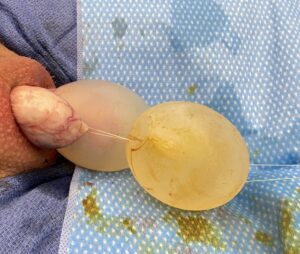Background: While testicle implants are most commonly associated with the man who has lost a testicle, they are also done for pure aesthetic purposes as well. When used for cosmetic testicular enlargement they are designed to supplement two indwelling natural testicles. This can be done either by a side by side implant technique or a wrap around implant concept, each with their own advantages and disadvantages.
The side by side testicle enlargement technique is as the name describes. Larger testicle implants than that of the natural testicles are placed inside the scrotum. The natural testicles are left in place and the implants displace them out of the way by their size. In essence this is a camouflage technique. It works well when the natural testicle size is fairly small (3.5cms or less) and the patient is comfortable with having ‘four’ testicles of various sizes. It has a very low rate of complications/revision and does not preclude the ability to detect testicular tumors by palpation.
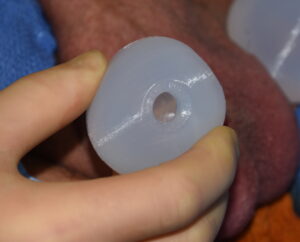
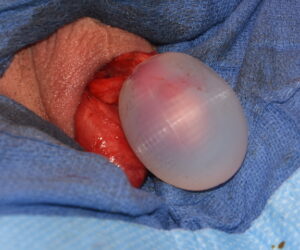
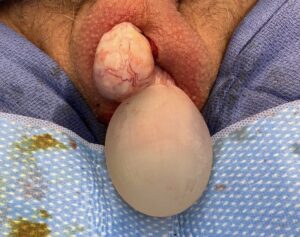
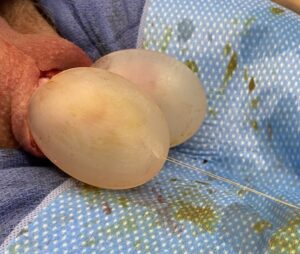
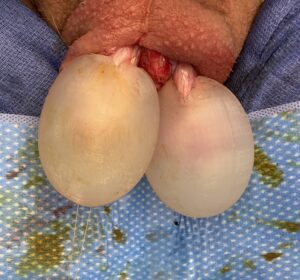
Despite a small exit hole on a wrap round testicular implant, which is necessary for the cord, it is always possible that displacement of the testicle can occur in the early postoperative period. Once the capsule is more fully formed around the implant the risk of such displacement diminishes. It is not a phenomenon I have seen but a few times and never before on a bilateral basis. These suture techniques between the testicle and its cord to the implant were important in secondary re-insertion and have merit to be used on a primary basis in the future.
The potential displacement risk speaks to why the side by side testicular enlargement is usually preferred where such a risk does not exist.
Case Highlights:
1) The greatest risk of the wrap around testicular implant is that the testes can slip out of the implant in the early postoperative period.
2) Secondary re-insertion of the testes back into the implant can be done with suture fixation techniques for stability.
3) Most of the time if the testicles are small enough the side by side technique is preferred as it avoids this potential postoperative complication.
Dr. Barry Eppley
Indianapolis, Indiana

